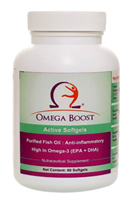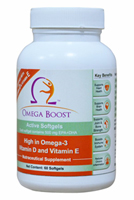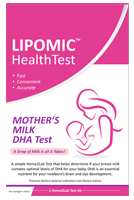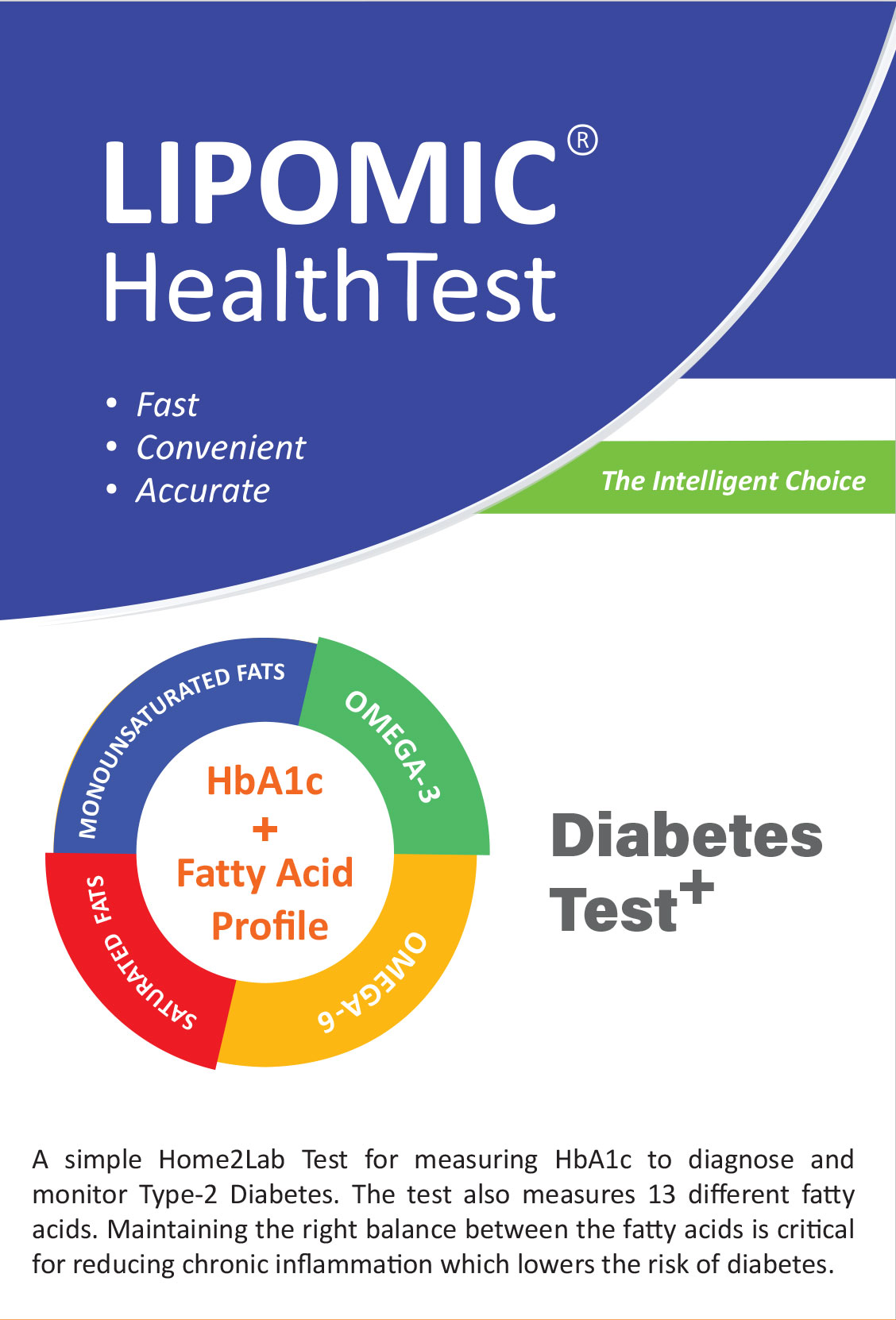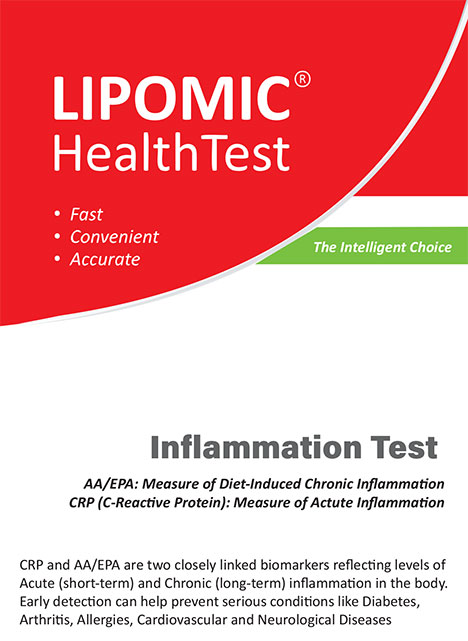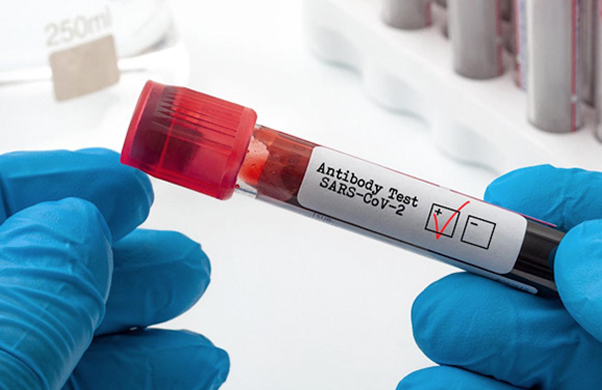Description
- Mom’s Milk DHA Test is a simple Home2Lab test for measuring DHA in mother’s milk.
- Just drop a few drop of mother’s milk on the sample collection card and courier it to Lipomic Healthcare laboratory.
- The test will help determine whether your diet contains sufficient amount of DHA necessary for the overall well being of your baby.
- Based on a simple, easy and hassle free sample collection procedure, you can take your sample from the comfort of home. Just follow the instructions as given in the instruction manual.
- The test kit will be provided directly to you at your doorstep from Lipomic Healthcare. Just courier us your sample and get your easy to understand results online within 48 hours of receiving the sample
Mom’s Milk DHA HealthTest New
₹2,400.00
Only customers holding Indian debit or credit cards may place their order through this portal. International customers are requested to write to us at info@lipomic.com so that we may assist them in placing the order.
Developing infants cannot produce Omega-3 DHA by their own and must receive this vital nutrient from the mother through placenta during pregnancy and in breast milk after birth. The only way to monitor Omega-3 DHA levels in breast milk or mother’s blood is through Mom’s Milk DHA HealthTest and Omega HealthTest
Importance of DHA
DHA plays a homeostatic role in maintenace of pregnancy and prevention of perterm labor 1
DHA supports fetal growth and neurological development 2
DHA during pregnancy reduces childhood obesity 3
DHA, the most abundant fatty acid in the brain (97%) and eyes (retina -93%) 4-5
- Makrides. M, et al, “Docosahexaenoic Acid and Preterm Birth”, Ann Nutr Metab 2016; 69(suppl 1):3034.
- Coletta.J.M, et al., “Omega-3 Fatty Acids and Pregnancy”. Rev Obstet Gynecol. 2010 Fall; 3(4): 163–171.
- https://activhealth.com.sg/research-papers/docosahexaenoic-acid-dha-during-pregnancy-reduces-childhood-obesity.
- Martinez M. Tissue levels of polyunsaturated fatty acids during early human development. Pediatr, 1992.120:S129-38.
- Lauritzen L, et al. The essentiality of long chain n-3 fatty acids in relation to development and function of the brain and retina. Prog Lipid Res, 2001. 40:1-94. (Calculated using Table 1 data. 22:6n-3/Total n-3)
Instruction Manual & Video
Contents of the Mom’s MilkTM test kit
- A collection Card and protection sleeve
- Aluminium zip lock pouch with a desiccant for humidity control
- Instruction Manual
- Pre-addressed envelope
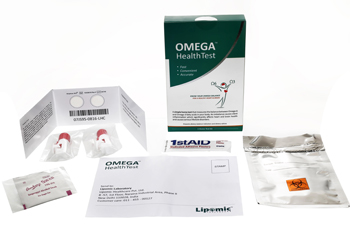
Lorem ipsum dolor, sit amet consectetur adipisicing elit. Quod tenetur, expedita illum vitae perferendis est exercitationem. Quo voluptatem nobis, maiores labore aperiam ducimus corporis debitis consequuntur atque sunt delectus dignissimos architecto voluptate veritatis impedit exercitationem deserunt illo expedita error laudantium! Porro consequatur debitis deserunt iste obcaecati eos adipisci aut, quae aspernatur laudantium totam officia veritatis unde dolorem. Sed deserunt tenetur vero animi consectetur cumque architecto corrupti aliquam, excepturi, est omnis! Quod consectetur quis inventore voluptatibus maxime sequi reprehenderit commodi officia nostrum a facilis aliquam recusandae rem dolorem, possimus quisquam distinctio eos odit? Debitis, perferendis explicabo ratione nesciunt, cum dolor quibusdam unde sequi est adipisci fugit quam, aliquid veniam! Distinctio voluptatum officiis veritatis cupiditate molestias neque voluptate mollitia, odio, aut enim architecto. Praesentium nihil doloribus beatae explicabo fuga amet debitis magnam sint repudiandae quas, enim in, error inventore distinctio adipisci assumenda labore fugit corporis! Dolor, harum dicta laudantium nostrum id deleniti!
[iframe src=”https://www.youtube.com/embed/oUJH3v9g-24″ width=”100%” height=”500″]
Complete Fatty Acid Profile
The Fatty Acid Profile measures 13 major fatty acids found in red blood cells. These 13 fatty acids represent almost 98% of the total fatty acids in human body.
The Complete Fatty Acid Profile measures the percentage of fatty acids from a convenient dried blood spot.


Fatty acids are the core building blocks of cellular membranes making them critical for cell membrane structure and function. Humans cannot synthesize Essential fatty acids (EFAs) and therefore must be obtained in the diet or through external supplementation. EFAs are transformed into Eicosanoids, a process important to boost body’s immune system.
It is well documented that circulating levels of certain essential fatty acids have strong associations with the risk of cardiovascular diseases, diabetes, asthma, and many other chronic inflammatory diseases.
This test report focuses on the individual fatty acid levels and balance between Omega-6 and Omega -3 fatty acids. Knowing these levels will help guide you in the best possible preventive health strategy, and will determine whether your current nutritional and supplement habits are working effectively.
Frequently Asked Question

Lorem ipsum dolor, sit amet consectetur adipisicing elit. Exercitationem, eius animi. Eaque optio et, impedit, consequuntur porro corporis odio culpa, ab iure consequatur animi mollitia. Ducimus placeat explicabo eligendi iusto.
DHA plays a vital role in a baby’s overall health, including eye development, nervous and immune system, and most importantly cognitive development. An infant’s brain growth is one of the crucial developments in the early years of its life, which requires an optimum level of DHA. Infants require a constant and optimal intake of DHA for up to two years after birth as the brain continues to develop6.Level of DHA in mother’s milk depends primarily on their diet. Our body does not produce enough DHA by its own and needs to be supplemented through a fish rich diet. While adults get their DHA from food or supplements rich in Omega-3, a fetus in-utero gets all its nutrients from its mother. Even if a mother doesn’t consume enough DHA, her body will use its own reservoir of DHA to provide it to the baby during gestation and then through breast milk after birth. Therefore, it is strongly recommended that mothers monitor their DHA level in order to provide maximum benefit to their baby during-and-after pregnancy.
The estimated global average level of DHA in breast milk is 0.32%, while the recommended levels of DHA in mother’s milk are 0.7%7. If the level of DHA in your milk is below the recommended level it is recommended that you eat diet rich in fatty fish or take high quality Omega-3 supplements on a daily basis.
It is recommended not to consume fish or fish supplements before collecting your sample. This will increase your Omega-3 DHA levels which will not reflect the true levels of DHA in your milk.
The European Food Safety Authority (EFSA) Scientific Panel recommends that pregnant and nursing women should consume an additional 100-200 mg DHA daily in addition to the 250 mg omega-3 intake recommended by EFSA for adults.
According to USFDA, fish and other protein-rich foods have nutrients that can help your child’s growth and development8.
6Adab-Jorge.A., “The Role of DHA and ARA in Infant Nutrition and Neurodevelopmental Outcomes”, Vol. 10 No. 10 P. 66
7Brenna, T.J., “Docosahexaenoic and Arachidonic acid concentration in human breast milk worldwide”, American Journal of Nutrition, 2007; 85, 1457-64).
8https://www.fda.gov/downloads/Food/FoodborneIllnessContaminants/Metals/UCM536321.pdf
Get Free Brochure
Lorem ipsum dolor sit amet consectetur adipisicing elit. Quam, quasi eius explicabo nihil eum nulla, sapiente ducimus voluptate veritatis et ipsa sequi expedita laboriosam culpa aliquam officia in hic maxime praesentium, iusto laudantium odio enim ratione eaque? Necessitatibus, maiores ipsam nobis nemo veritatis dolorum tempora deserunt ipsa repellendus saepe, impedit ratione laboriosam vel, soluta amet voluptatibus cupiditate excepturi perspiciatis explicabo. Et, necessitatibus. Quasi labore perferendis neque cum sint velit quas alias laudantium debitis incidunt saepe, obcaecati officia delectus reprehenderit! Quam, cumque molestiae quos odit blanditiis enim adipisci illo repudiandae quod ipsa, vero placeat dolorum temporibus consequatur autem, atque vel quasi maiores iusto. Exercitationem totam corrupti quia facilis fugit nobis suscipit, nam modi natus rerum nisi omnis, vel, repellendus ipsam? Ex possimus eveniet, vel harum animi iure illo saepe quae enim eum aliquam unde hic ducimus accusantium repellendus non laboriosam doloremque laudantium, voluptates placeat ratione nihil nam. Ullam enim quos optio.

